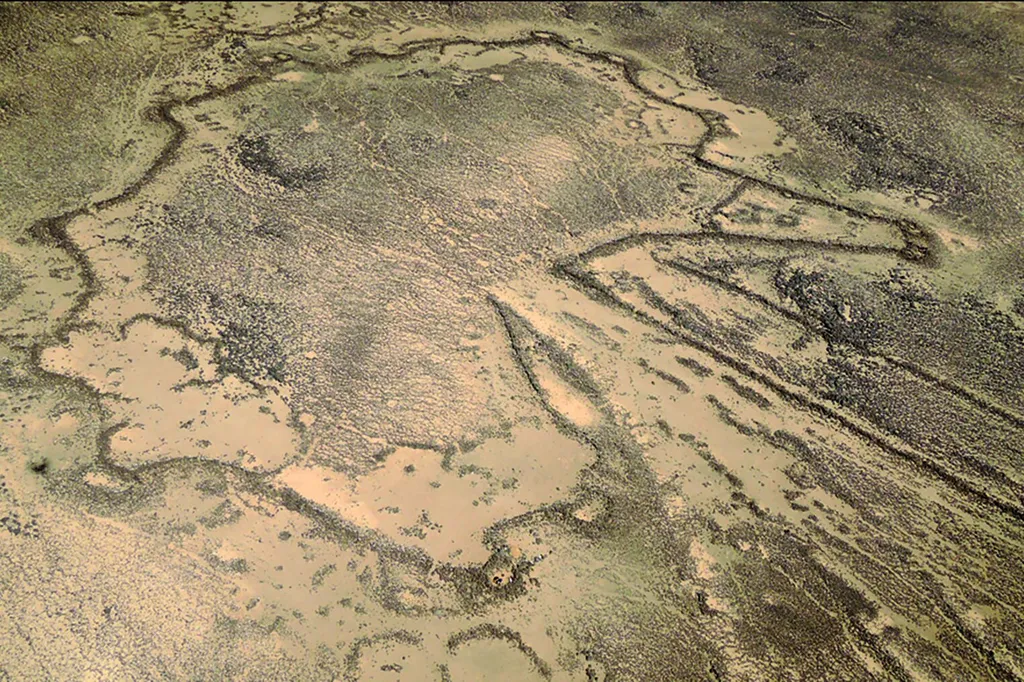In the vast, arid landscapes of the Middle East and Central Asia, ancient structures known as desert kites have long been a challenge to identify and study. These large, ancient traps, characterized by two low, long walls converging into an enclosure, are often semi-embedded within the terrain, making them difficult to distinguish even with advanced scanning technologies. However, a groundbreaking machine-learning approach developed by R. Arav from the Institute of Geomatics at BOKU University in Vienna, Austria, is set to revolutionize the way archaeologists and energy sector professionals analyze 3D point clouds derived from terrestrial laser scans.
Arav’s method, published in the ISPRS Annals of the Photogrammetry, Remote Sensing and Spatial Information Sciences (which translates to the International Society for Photogrammetry and Remote Sensing Annals), leverages the power of machine learning to highlight regions within 3D point clouds that contain archaeological features. The approach is based on a simple yet powerful assumption: archaeological features present anomalies within the surface.
“The idea is to learn to reconstruct the surface from the acquired point cloud and then compare the reconstructed surface to the original one,” Arav explains. “A large error in this comparison signifies an anomaly, which could be a feature of interest within the point cloud.”
This innovative method has significant implications for the energy sector, particularly in the realm of cultural heritage management and site assessment. As energy companies increasingly focus on sustainable and responsible practices, the ability to quickly and accurately identify archaeological sites becomes crucial. This not only aids in preserving historical sites but also helps energy companies avoid costly delays and legal issues associated with unintentional damage to cultural heritage.
“The proposed method can highlight the kites within the raw point cloud without the need for expert input and without labeled information,” Arav notes. This means that energy companies can integrate this technology into their existing workflows, streamlining the process of site assessment and reducing the need for specialized archaeological consultations.
The potential applications of this research extend beyond the energy sector. In the field of archaeology, the method promises to expedite the documentation and analysis of sites, allowing researchers to focus more on interpretation and less on data processing. Moreover, the approach can be adapted to other types of point cloud data, making it a versatile tool for various industries.
As the energy sector continues to evolve, the integration of advanced technologies like Arav’s machine-learning approach will be key to balancing development with cultural preservation. By embracing these innovations, companies can ensure that their projects are not only efficient and cost-effective but also respectful of the historical and cultural landscapes they operate within.
In the words of Arav, “This method opens up new possibilities for how we interact with and understand our historical landscapes.” As the energy sector looks to the future, it is clear that such advancements will play a pivotal role in shaping responsible and sustainable practices.

